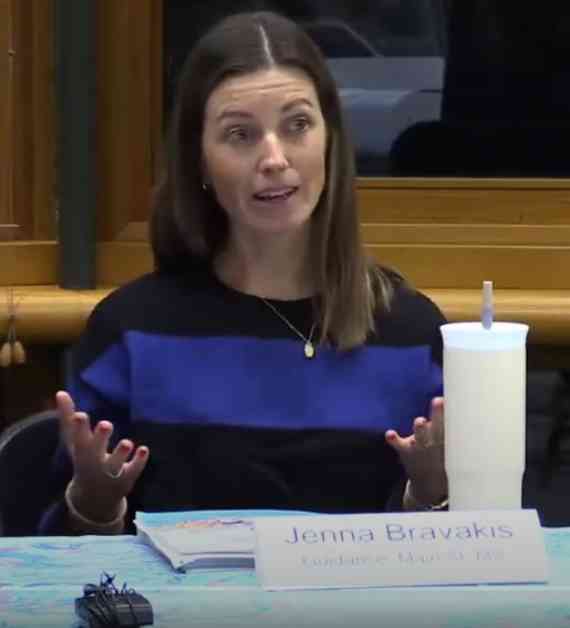Phone-Free Movement Gains Traction in Montpelier
In a recent panel discussion held on February 10th in Montpelier, Vermont, school officials, teachers, and mental health counselors came together to address the pressing issue of smartphones and social media impacting the learning and mental health of teenage students in the state. Led by moderator Liza Earle-Centers, the panel sought to draw attention from the Vermont Legislature to address this growing concern.
The panel emphasized the importance of transitioning towards a “phone-free” environment in schools, rather than simply “banning” phones. According to Earle-Centers, this initiative aims to reduce distractions and disruptions caused by social media, ultimately benefiting both students and teachers. By creating a phone-free environment, the goal is to improve mental health, enhance social cohesion, and boost learning outcomes for students across Vermont.
However, a significant roadblock to implementing this initiative lies in the current funding structure for public education in Vermont. This challenge was highlighted by the panel, indicating that a shift in the way Vermont supports education is essential to make progress on the phone-free policy. Despite this obstacle, the panel remains optimistic about the potential positive impact of such a change.
Opposition and Advocacy
One of the key concerns raised during the panel discussion was the reluctance of Rep. Kate McCann, D-Montpelier, to support the proposed phone-free policy options (S-31 and H-54). With 50 co-sponsors on the House side, the panel emphasized the importance of advocating for these policy changes by engaging with legislators. Writing to representatives and voicing support for the initiative was deemed crucial in pushing for legislative action.
The panel, consisting of parents and professionals working with children, shared firsthand observations of the escalating disruptions in learning over the past five years. They also presented evidence from schools that have already implemented phone-free policies, showcasing positive improvements in learning, social engagement, and student mental health. The anecdotal evidence provided by these experts underlines the urgency of addressing the smartphone issue in educational settings.
Impact on Mental Health and Learning
The discussion also delved into the mental health implications of excessive phone use among teenagers. Dr. Rima Carlson, a Montpelier physician and parent, noted a concerning trend of rising mental health concerns among teen patients, correlating with increased screen time. She highlighted the addictive nature of smartphones and the challenges parents face in regulating phone use among adolescents, whose brains are still developing.
Mary Zentara, a special education professional, emphasized the impact of smartphone use on the developing teenage brain. She explained how the absence of mature neural pathways in adolescents can lead to emotional vulnerability and mental health issues, exacerbated by constant exposure to digital devices. Zentara’s insights shed light on the physiological effects of excessive screen time on young minds.
Jenna Bravakis, a middle school counselor, shared her personal experiences working with students navigating the complexities of smartphone use. She highlighted the emotional attachment some students develop towards their phones and the need for education on responsible digital behavior. By advocating for a curriculum that addresses the effects of social media on relationships and emotional well-being, Bravakis aims to empower students to make informed decisions about their online interactions.
The proposed phone-free legislation aims to provide schools with flexible options for managing phone use, relieving teachers of the burden of enforcement. By offering a variety of approaches to creating a phone-free environment, the legislation seeks to promote a culture of responsible technology use in educational settings.
To view the panel discussion and learn more about the phone-free initiative, visit youtube.com/live/2mtPdnYVFtI.



















